GooseGestapo
Member
- Joined
- Jan 6, 2003
- Messages
- 6,153
Even if sights are busted, you’re still able to point shoot. The only time I’ve ever damaged adjustable sights is dropping on the concrete at/during training events…
Who’d think?
Who’d think?
Now there is one I'd like to own! Except I'd prefer to still have the spur on the hammer!Fixed sights, no hammer spur, nice trigger. It's my nightstand gun and hiking piece. I prefer the K-frame. The J-frame is much harder to shoot well, and the N-frame is bulky to carry or for close quarters.
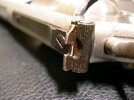
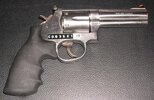
Built like a sleek tank. One screw disassembly for field stripping.Lots of good suggestions. Ill throw the Ruger Security Six 4" 357 magnum into the mix. Might be about as streamlined as I can think of while still being fairly bomb proof.
I'm a believer in fixed sights too.Here’s an old conundrum:
Should a duty or fighting revolver have adjustable sights, which could could be irreparably damaged by a drop or otherwise, or stay with frame fixed sights?
A fighting gun‘s adjustable sights may be damaged far from an armorer and not be able to be quickly repaired, and not be of use when needed.
Personally, I would stick with fixed sights, such as on my S&W K frame, which have a long history of being rugged duty and fighting guns.
Now there is one I'd like to own! Except I'd prefer to still have the spur on the hammer!
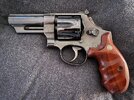
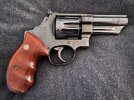
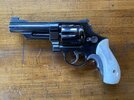
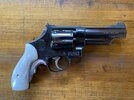
too many load variations in 357 magnum/38 Special so given the choice I want adjustable sights every time. Might make sense If I was only going to use one particular load. Its not like the gun is completely useless if your rear sight gets broken or knocked off.Here’s an old conundrum:
Should a duty or fighting revolver have adjustable sights, which could could be irreparably damaged by a drop or otherwise, or stay with frame fixed sights?
A fighting gun‘s adjustable sights may be damaged far from an armorer and not be able to be quickly repaired, and not be of use when needed.
Personally, I would stick with fixed sights, such as on my S&W K frame, which have a long history of being rugged duty and fighting guns.
In the duty revolver context, after seeing a colleague’s rear sight break, when she dropped it, during a building search, I soon switched to a fixed-sight duty sixgun, an S&W Model 58. Eventually, however, I settled on an adjustable-sight duty revolver, and fixed-sight back-up revolver, on my person. Having a spare duty revolver, either at home, or even in the trunk of the patrol vehicle, meant reasonably quick access to a functional full-sized duty handgun, regardless of the reason. Eventually, I did crack the rear sight leaf of a duty GP100, which was no problem, because I had reasonably expedient access to two or three spare 4” revolvers.Here’s an old conundrum:
Should a duty or fighting revolver have adjustable sights, which could could be irreparably damaged by a drop or otherwise, or stay with frame fixed sights?
A fighting gun‘s adjustable sights may be damaged far from an armorer and not be able to be quickly repaired, and not be of use when needed.
Personally, I would stick with fixed sights, such as on my S&W K frame, which have a long history of being rugged duty and fighting guns.
Only thing I would change on it would be to give it a round butt. But that would workReliable, fixed sight, 3" barrel, 6 round, spurless hammer 357 magnum. IMO.View attachment 1166011
